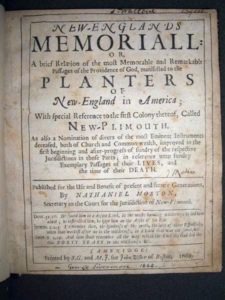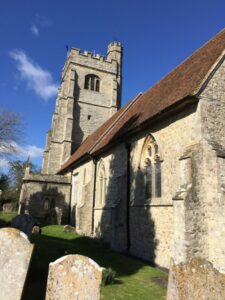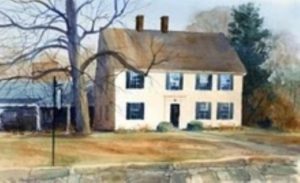In the New England Memorial by Nathaniel Morton (1669), John Lothropp was considered to be one of the five most important ministers to arrive in New England during the Great Migration.

Five United States presidents, as well as Princess Diana, descend from John Lothropp. So does a signer of the Declaration of Independence, also Oliver Wendell Holmes, Henry Wadsworth Longfellow, John Pierpont Morgan, Lewis Comfort Tiffany, Walt Disney, Joseph Smith and dozens of other famous individuals who helped shape the country.
Thirty years ago, my father-in-law introduced me to his eighth great-grandfather, Reverend John Lothropp, through a booklet published by the Institute of Family Research called John Lathrop 1584-1653: Reformer, Sufferer, Pilgrim, Man of God (1979). Interested in history, genealogy, and religion, I was captivated by this courageous reformer with such immense zeal and humility. I was also curious as to why a man would risk so much for the right to pray and worship the way his conscience dictated, so similar to the plight of the American Pilgrims and other religious martyrs and reformers.
Against the backdrop of the seventeenth century Church of England’s religious suppression, my novel, The Pulse of His Soul: The Story of John Lothropp, a Forgotten Forefather, begins shortly after Reverend Lothropp takes his orders to become a perpetual curate in Egerton, England in 1610. I felt it was here we needed to start his journey and understand his character in order to follow him through his change of heart and separation from the Church of England to join with the Independent Church in London.

Hannah Howse—his wife and the daughter of a vicar—was a strong and loving woman who did not make the same choices as her husband. Because of this, the religious conflict and fervor of the kingdom entered their home, even though both believed in a powerful and individual relationship with God that could be mastered through faith and unification. The Pulse of His Soul unfolds through the eyes of both Reverend Lothropp and his wife. His personal decision to renounce his orders affected his whole family when he fell out of favor with the Church and lost his social standing.
When the Reverend John Lothropp came as an exile to America in 1634, he settled with his congregants in Scituate, but by 1639 he founded Barnstable, Massachusetts, a coastal town on Cape Cod. Here he became known as the minister of the Congregational Church. (It survives in customs and worship to this day, now known as West Parish Church.) And just as his congregation had done in London, they covenanted together “to walk in all God’s ways as He had revealed or should make known to them.” The town prospered under the spiritual guidance of Lothropp and for seventy-eight years it was the only church in Barnstable. The home he constructed in 1644 still partially stands and is the original part of the Sturgis Library, which is the oldest Library building in the United States.

To learn more about John Lothropp
Check out The John Lothropp Foundation and also read about John Lothropp on Wikipedia, where it states: “Perhaps Lothropp’s principal claim to fame is that he was a strong proponent of the idea of the Separation of Church and State (also called “Freedom of Religion”). This idea was considered heretical in England during his time, but eventually became the mainstream view of people in the United States of America, because of the efforts of John Lothropp and others.”
